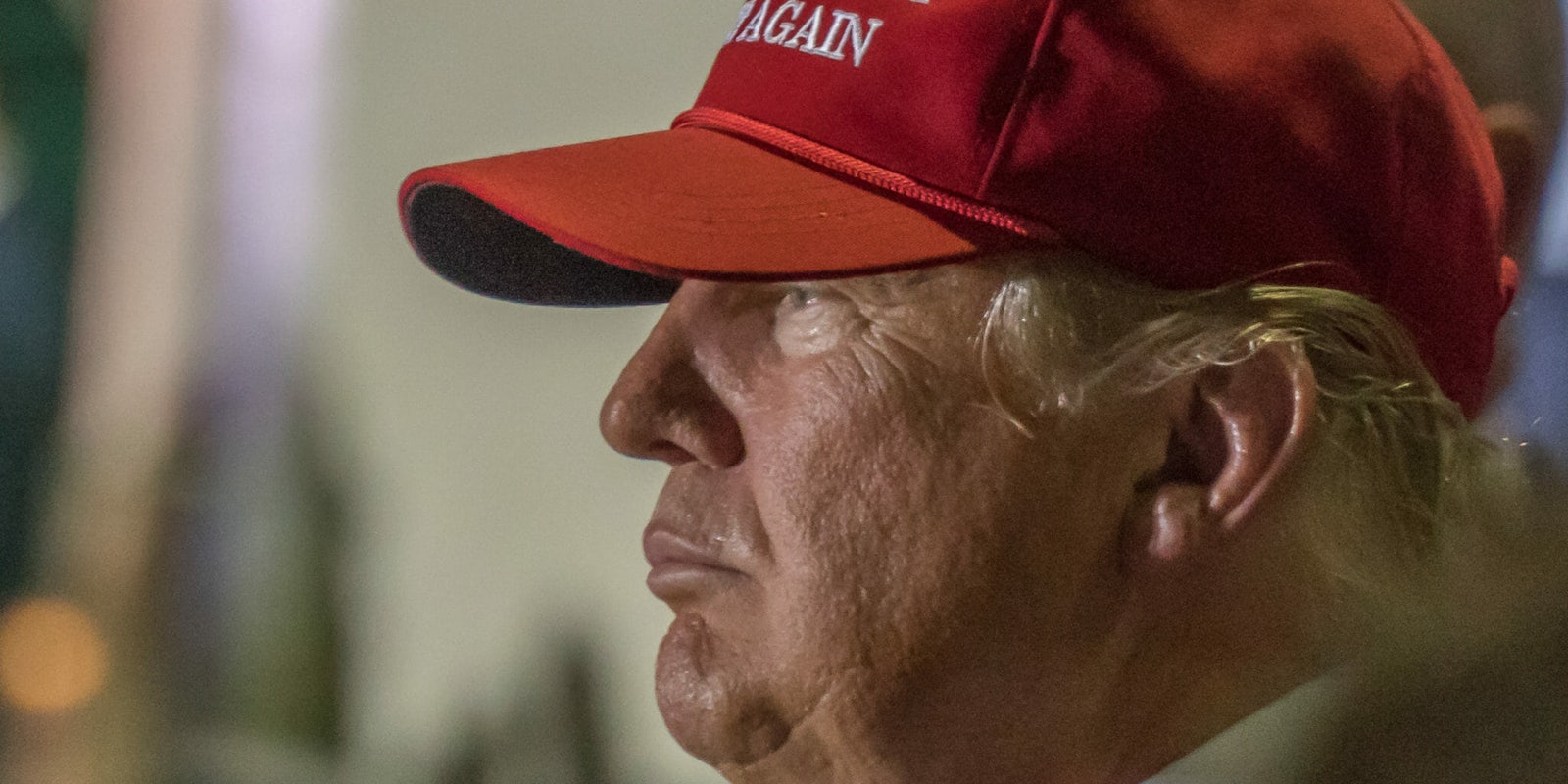It should come as no surprise that the businessman-in-chief has focused heavily on raising re-election funds despite having three years left in his presidency. Though no other president in history has started funding for re-election so soon after taking office, President Donald Trump’s re-election campaign banked $22 million in 2017. We wish we could say we were more surprised that 25 percent of the campaign’s spending has been on legal fees, but the recent filings detailing the campaign’s spending are as Trumpian as expected.
The New York Times reported that the Trump campaign has spent $1.2 million on legal fees in the last three months, presumingly stemming from the various issues that have arisen from the investigation into his alleged collusion with Russia during the 2016 election. This wasn’t the only piece of revealing and disturbing information arising from the campaign’s filings.
In fact, a survey of Trump’s re-election spending reveals a range of unorthodox approaches that tread in the ethical grey areas.
Fundraising
Before we get into Trump’s spending, let’s spend a little time on how his campaign went about fundraising. Despite his historically low approval ratings, the majority of the donations to his campaign in 2017 came from small-dollar contributions under $200. Though President Trump has failed to deliver on many of his populist promises, he managed to raise $4 million in small contributions in Q4.
Trump’s campaign has consciously courted small donors, with an approach that feels like a funhouse mirror version of the Bernie Sanders primary campaign. Trump’s team has often used tactics that feel like P.T. Barnum-inspired gimmicks to raise money, including sensational issue-based emails and streaming donors names on a State of the Union live feed.
Digital Donors
This fundraising approach is an important key to understanding Trump’s 2017 spending. Trump’s campaign paid $1.1 million to a company owned by Brad Parscale, the digital director of Trump’s campaign. The social media and email strategy that led to those small-dollar donations is largely credited to Parscale. During the 2016 campaign, Parscale used unorthodox campaign approaches, such as Facebook advertising to bolster Trump’s messaging. The Trump campaign likes to take advantage of news stories like the James Comey firing to fundraise, creating an image that campaign donations will protect Trump and his “America First” movement, from various enemies (both real and imagined).
Merchandising and MAGA Hats
Despite a hefty investment in digital technology, the campaign also spent a good amount of cash on traditional campaign expenditures. In Q4, the campaign spent $361,000 on merchandise, which we can assume largely consists of Trump’s iconic Make America Great Again hats. The hats have mystified designers, who have to begrudgingly admit that they have been a success. Fast Company’s piece, “The Worst Design of 2016 Was Also the Most Effective” sums up the general feeling industry experts have towards the phenomenon. The Trump campaign spent over $3 million on the hats during their 2016 election bid, and that spending looks likely to continue.
Paying Himself
Donald Trump has a long history of renting out his properties and services to himself. This continued apace in Q4 of 2017. The campaign paid $29,000 to the Trump Corporation for legal consulting, nearly $4,000 in rent to Trump Plaza, $11,000 in rent to Trump Restaurants, and $10,000 in travel costs to Trump International Hotel. While technically legal, this behavior becomes all the more abhorrent when you consider that if 98 percent of donations were small-dollar and the campaign spent over $50,000 on Trump businesses, a good chunk of cash went from his lower-income donors directly into Trump’s pocket in the guise of “draining the swamp.”
Legal Fees
While $50,000 is a small chunk of $7 million in yearly campaign spending, we can rest assured that a number of those small-dollar donations went towards the much larger expenditure of paying off Trump’s legal fees. The campaign spent $1.1 million on legal fees in Q4 and over $3 million over the course of 2017.
Digging into the details of these expenditures make them look even worse. Michael Cohen, Trump’s former private attorney received $214, 467 in legal assistance from Trump in the last few months. That’s right: nearly a quarter million dollars of campaign funds went to securing lawyers for Trump’s lawyer. The majority of the money went to dealing with Trump and his associates’ legal entanglements, presumably involving the Russia investigation, though no administration officials or legal advisors will confirm that.
FEC filings also showed that the Trump campaign hired a private investigation firm, Confidential Global Investigations. The campaign paid the New York-based company $5,000 in December, and while no one has been able to get comment from CGI, their services involve “covert intelligence gathering” and is staffed with former FBI and Interpol agents.
The Big Picture
The Trump Campaign’s fundraising and spending strategy, on balance, feels like an extension of his policies and ideology. Just as his tax cut takes from the lower class and gives to the upper class, and many of his products, from Trump University to Trump Steaks, sold an inferior product to uneducated consumers with gilded trappings, his campaign is functioning like a scam.
Aggressive fundraising involving the issues of the day and vague populist sentiment are being used to gin up donations that have been used primarily for legal fees, paying himself, and creating more schemes. As the Russia investigation continues and the connections between Trump and the various business interests he declined to divest from increase, we can view the campaign’s early spending as a blueprint for future behavior.
Like so much in Trump’s history, his campaign is functioning like a Ponzi scheme that will personally benefit the president and his associates.


